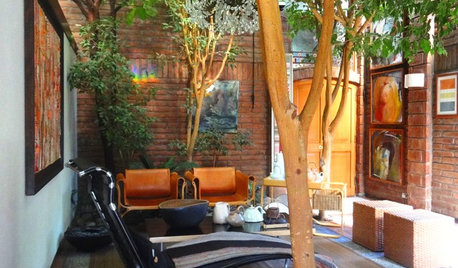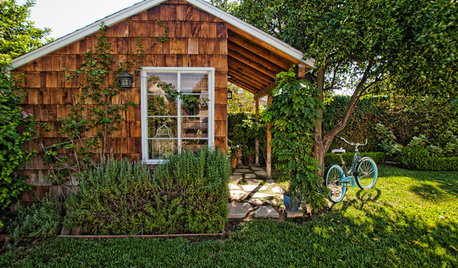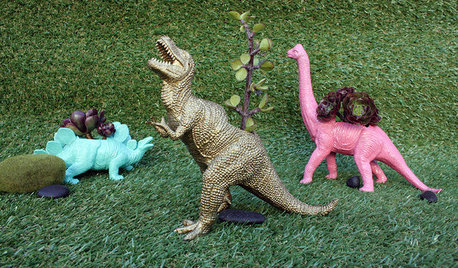Should I repot my ficus?
grice
17 years ago
Related Stories

DECORATING GUIDESThe Dumbest Decorating Decisions I’ve Ever Made
Caution: Do not try these at home
Full Story
HOUZZ TOURSHouzz Tour: Eclectic Chilean Home Embraces Trees
Ficus trees star in the interior courtyard of this Santiago house, which celebrates its design history, quirks and mix of styles
Full Story
BACKYARD IDEAS7 Backyard Sheds Built With Love
The Hardworking Home: Says one homeowner and shed builder, ‘I am amazed at the peace and joy I feel when working in my garden shed’
Full Story
HOUSEPLANTSSee How Fiddleleaf Fig Trees Can Liven Up Your Decor
The tropical houseplant with big green leaves adds a cheerful and striking design element to rooms
Full Story
HOUSEPLANTSPlay Up Some Fiddleleaf Figs for a Lively Indoor Tune
Strike a dramatic chord in a minimalist scene or a country note in a rustic setting — fiddleleaf fig plants harmonize with any style
Full Story
HOUSEPLANTS8 Essentials for Healthy Indoor Plants
Houseplants add so much to our homes — and can thrive when grown in the right conditions. Keep these tips in mind
Full Story
HOUSEPLANTSMother-in-Law's Tongue: Surprisingly Easy to Please
This low-maintenance, high-impact houseplant fits in with any design and can clear the air, too
Full Story
Rooting for Indoor Trees
Houseplants tend to get all the glory indoors, but trees deserve their place in the sun — and in your living room, your entryway, your ...
Full Story
HOUSEPLANTS7 DIY Projects That Have Fun With Houseplants
Go beyond the ordinary when you add a touch of green to your interiors
Full Story
HOUSEPLANTS8 Houseplants You Can't Kill
They're forgiving and let you forget. Houseplants don't get any easier than this
Full StoryMore Discussions










tapla (mid-Michigan, USDA z5b-6a)
willcreed
Related Professionals
New Bedford Landscape Architects & Landscape Designers · Ashland Landscape Architects & Landscape Designers · Erie Landscape Architects & Landscape Designers · Aberdeen Landscape Contractors · Columbine Landscape Contractors · Fort Wayne Landscape Contractors · Hayden Landscape Contractors · North Potomac Landscape Contractors · Palos Verdes Estates Landscape Contractors · Rockwall Landscape Contractors · Thornton Landscape Contractors · Twin Falls Landscape Contractors · Wethersfield Landscape Contractors · Oxon Hill Landscape Contractors · Livingston Handymanpistilo
lucy
tapla (mid-Michigan, USDA z5b-6a)
willcreed
tapla (mid-Michigan, USDA z5b-6a)
watergal
griceOriginal Author
tapla (mid-Michigan, USDA z5b-6a)
watergal
tapla (mid-Michigan, USDA z5b-6a)
griceOriginal Author
watergal